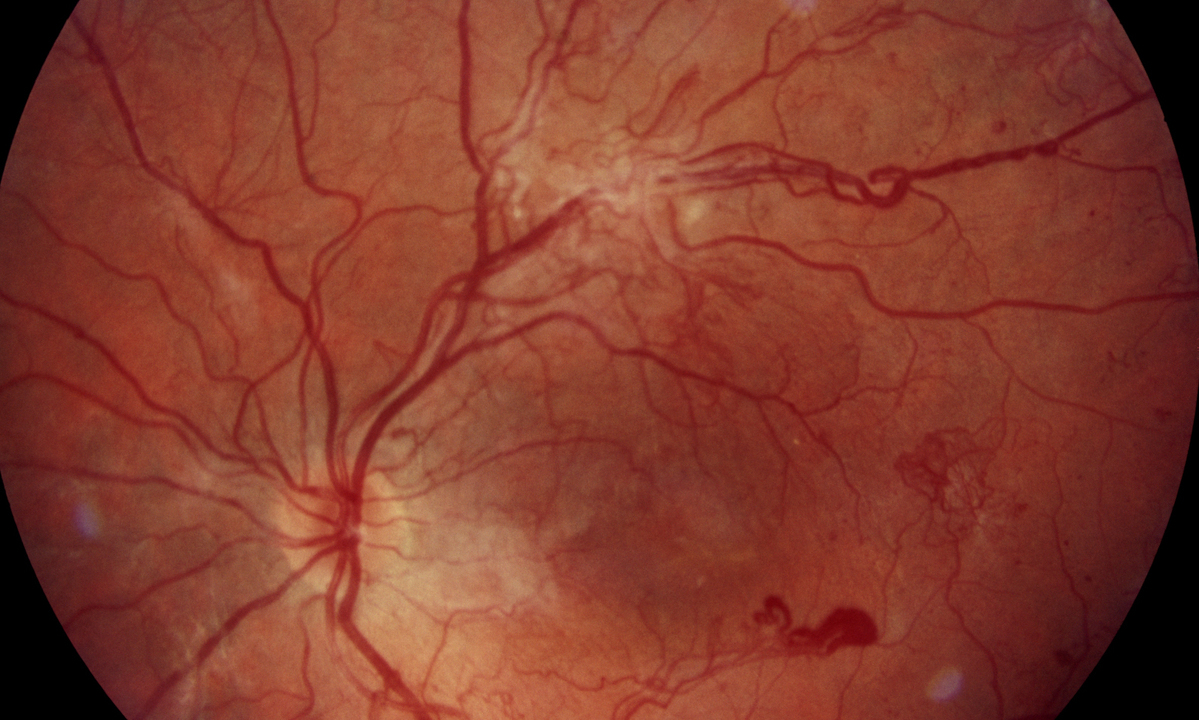Potential New Treatment Option for Diabetic Retinopathy
Researchers at the University of Oklahoma Health Sciences and Memorial Sloan Kettering (MSK) Cancer Center are studying a new, revolutionary treatment for diabetic retinopathy (DR) that could change the prognosis for diabetis patients. They focus on a certain very damaging type of lipids, ceramides, which are present in the eyes of DR patients.

Julia Busik, Ph.D., professor and chair of the department of biochemistry and physiology in collaboration with Richard Kolesnick, MD of MSK Cancer Center, recently published a paper in the journal Cell Metabolism that details how anti-ceramide immunotherapy can address the root cause of the disease and stop progression toward blindness at an earlier stage than previous treatments.
“With the rise in diabetes, there's a rise in complications. One-third of adults over age 40 with diabetes have retinopathy,” said Busik. “If left untreated, diabetic retinopathy can lead to blindness. Losing vision is one of the most feared complications for patients with diabetes.”
This blindness is caused by damage to the blood vessels leading to hemorrhaging and lipid build-ups. These start as dark spots in the field of view. If untreated, these can cause retinal detachment leading to blindness. First-line treatment for patients with DR or is anti-vascular endothelial growth factor (VEGF) therapy. Although 60% of patients treated with anti-VEGF are responsive to treatment, 20% of patients show modest response, and the remaining 20% do not respond. Intravitreal corticosteroid treatment as an anti-angiogenic and anti-inflammatory therapy for DR has shown promising results. Yet the full extent of its beneficial effects, patient responsiveness, and potential neurologic side effects remain unclear. Apart from anti-VEGF and steroid therapy, photocoagulation treatment is available to treat, specifically, proliferative DR. All available treatments focus on late stages of DR when full reversal of the disease is unlikely. Discovering novel treatment approaches that target earlier non-proliferative DR stages of disease when reversal of pathology is still possible remains paramount.
The researchers are working on an exciting new treatment that could address the root cause of diabetic retinopathy. Continuing research that she began at Michigan State University, Busik has taken a closer look at lipids, specifically lipid pathways in the retina of the eye, and how they are affected by diabetes. She and her team found that a certain, very damaging type of lipid, or ceramide, was present in the eyes of patients with diabetic retinopathy. Ceramides are bioactive sphingolipid messenger molecules recently recognized as determinants in progression of diverse metabolic diseases.
In turn, they discovered that these ceramides, after stimulation by inflammatory cytokines, stick together into large domains that cause damaging inflammatory signals to cells in the eye. This causes cell death and the progression of DR.
In collaboration with the Kolesnick laboratory at MSK Cancer Center, Busik’s team was then able to create an antibody against these lipids to prevent the ceramide buildup from happening and signaling the damage to healthy cells in the retina. The studies show great promise in animal and cell culture models.
Perhaps the most important advance from the current treatment is that it addresses the root cause of the disease, as opposed to late symptoms and stopping progression at the vision-threatening stage, explains Busik. It can also be administered systemically, so it does not have to be injected into the eye. Due to their invasive nature and safety concerns, currently available treatments are only used at very late stages of the disease when the vision is threatened.
“If we have this systemic safe treatment,” said Busik. “It could be given to a patient at a much earlier stage when they are just starting to progress, to make sure that they never get to that late stage.”
Cell Metabolism: Diabetic retinopathy is a ceramidopathy reversible by anti-ceramide immunotherapy